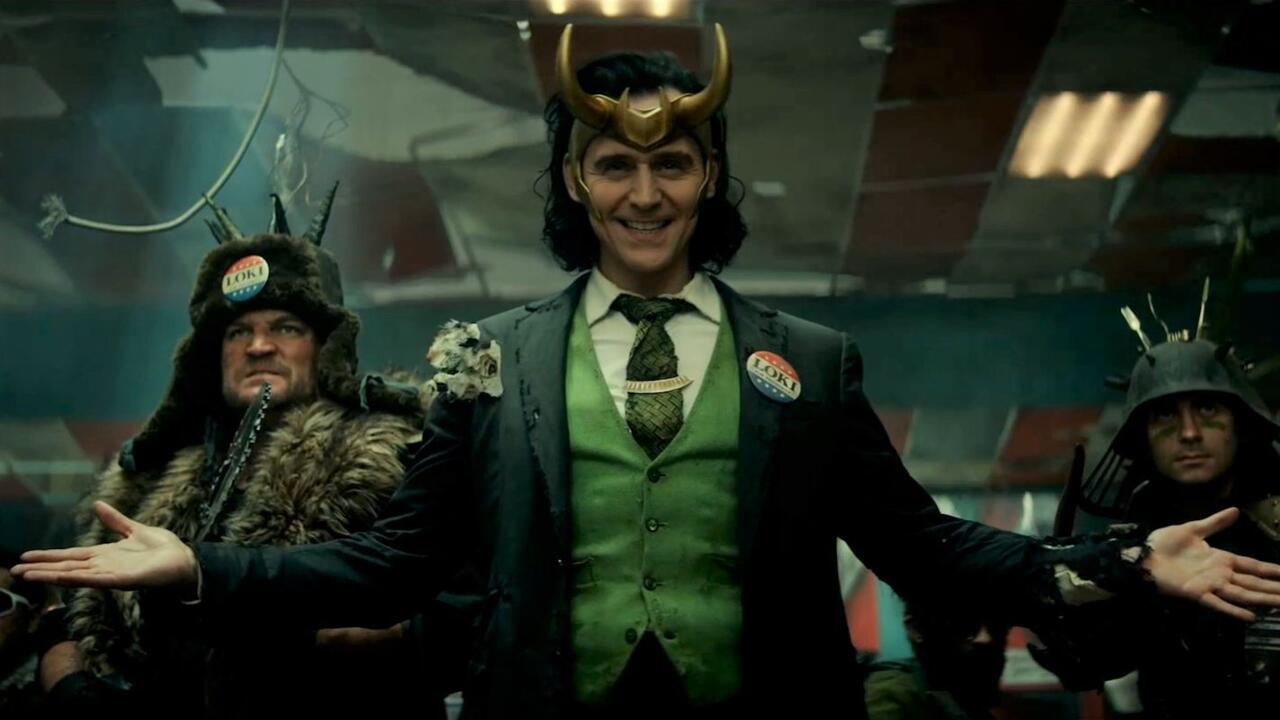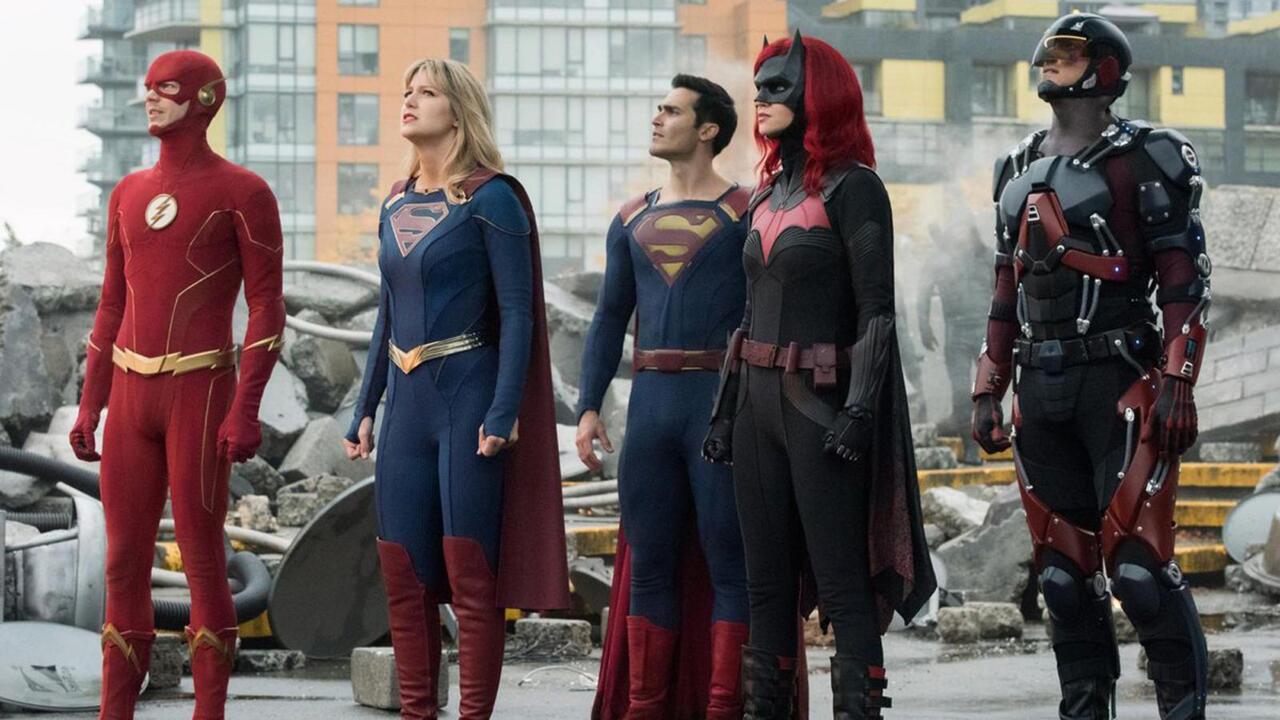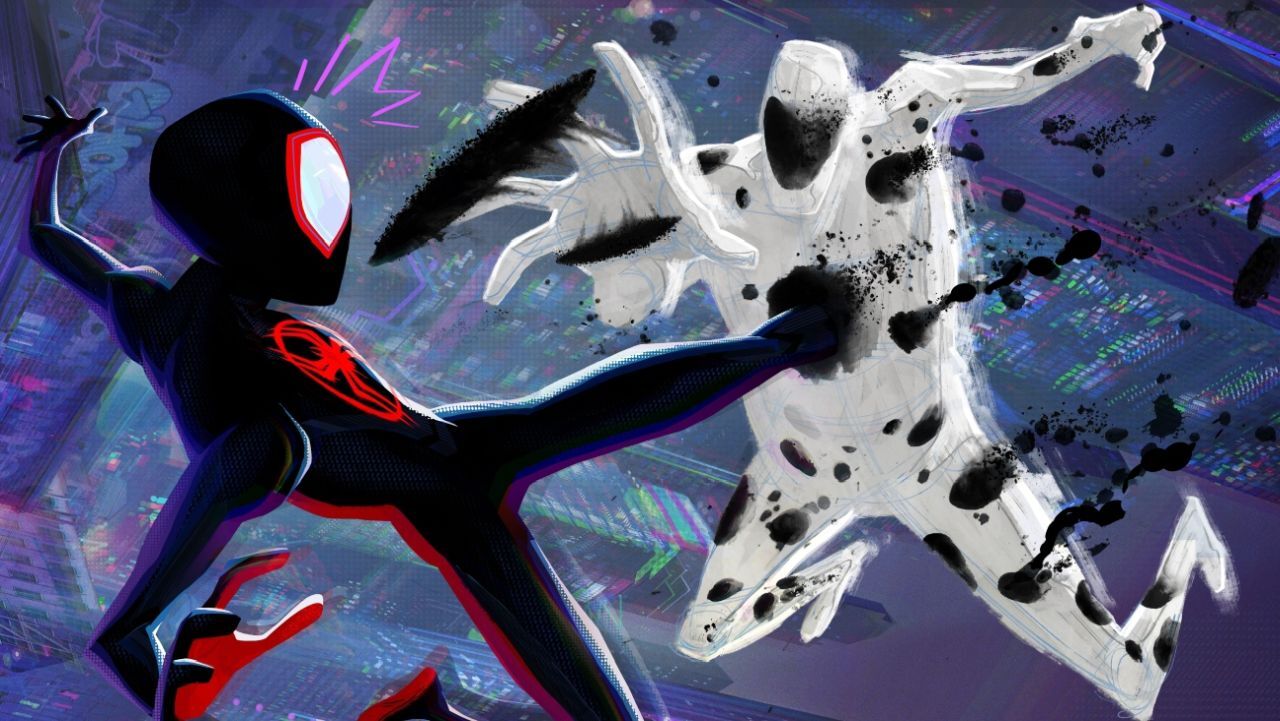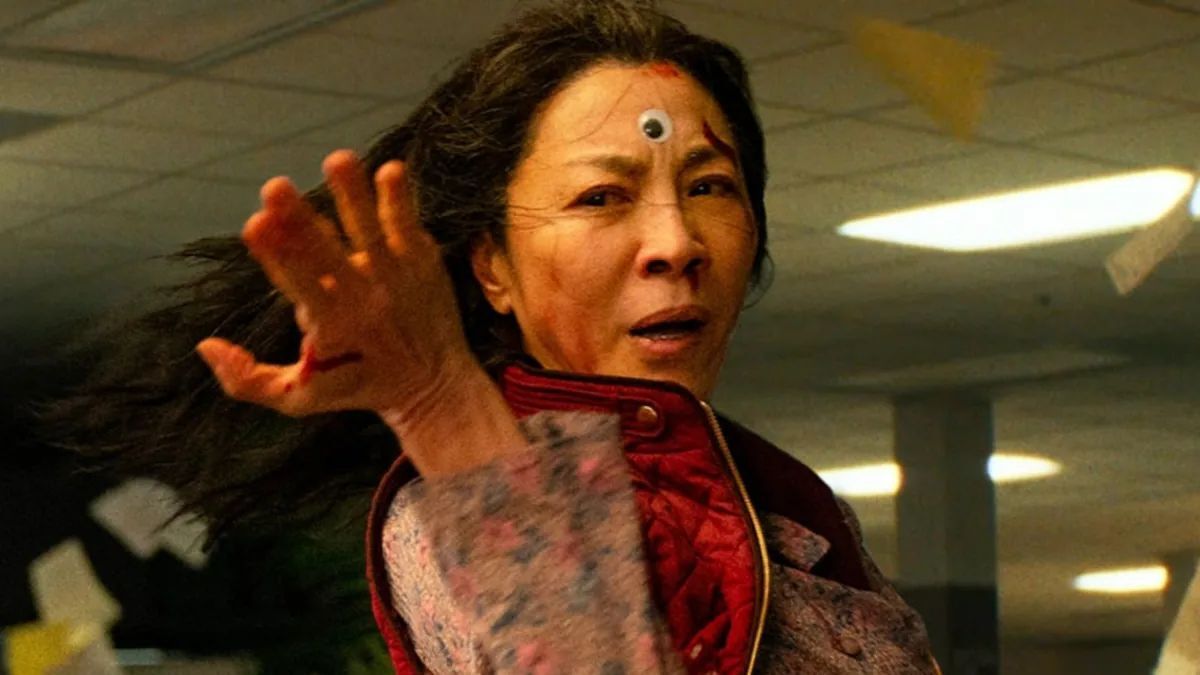Why Do Some Multiverses Work While Others Don't?
Do you count Marvel movies as homework yet?
In another version of our universe, you're reading this same article, but the headline is "When will pop culture embrace the idea of a multiverse?" Michael Keaton is still playing Batman, Tobey Maguire is still Spider-Man, and Adult Swim's hit show is Doc and Marty, a Back to the Future spin-off about time travel hijinks.
But you're in this universe, and we're drowning in multiverses, from television to streaming to blockbuster and indie cinema alike. Spider-Man: Into the Spider-Verse and Everything Everywhere All At Once are Academy-Award-winning movies that took Best Animated Film and Best Picture respectively--some of the most prestigious awards available for each of the movies. In the last few years, we've seen DC embrace the multiverse at all levels, with the Arrowverse as perhaps the most prominent and now the upcoming The Flash potentially breaking it all to pieces.

A few years in, though, it seems like everyone is getting exhausted with the concept. For good reason, too. It's a lot of work keeping mental track of which characters are from which universe, what happens when someone travels between universes and all of that. And yet, multiverse movies keep winning awards.
So what makes one multiverse tick and another fall apart? What gives one meaning and makes the other meaningless? When we stand back and look at how each piece of media is using its multiverse, we can start to see what's going on.
While this writer is still on-board for Marvel movies, many people claim to have left the chat entirely, and there's a simple reason for this: It all feels like homework. Once, many years ago, the MCU was an experiment. The idea that the standalone Iron Man movie could connect to the Avengers was exciting and fresh, and it was entirely unprecedented in cinema. There seemed to be a generally high bar set for Marvel movies at the time, which didn't hurt. They might not have all been great, but they were almost all fun and they mostly looked really good.

Nowadays, it's easier to see the gears of the Marvel Studios machine. There are Marvel shows and movies, and they all--with very few exceptions--have mid- and post-credit scenes that tease the future of the MCU. And if we look back through those scenes, there's a Frost Beast still running around after Thor 2. Baron Mordo is still planning to kill all of the sorcerers, like an MCU John Wick post-Doctor Strange. There are a bunch of these scenes that are left unfulfilled with seemingly no plans to follow up on them.
And even of those that are eventually fulfilled, they're no longer a tease for an experiment, but now the Promise of Future Content--more movies and shows that you'll have to keep up with and spend time on. If you're a nerd who likes doing homework for the sake of doing homework, the MCU still has lots of fun stuff going for it. But for many people, it looks like squandered potential and broken promises fueling a monstrous profit machine.

DC, meanwhile, is doing something quite different. DC doesn't have a single, unified multiverse the same way Marvel does, but DC is in love with multiverses all the same. The upcoming Flash movie features the Batman of the DCEU, played by Ben Affleck, as well as Micheal Keaton's Batman from the 1989 film and its sequel. And there's no Superman, but there is a Supergirl (Sasha Calle). The streaming show Titans introduced the multiverse in this latest season when Gar--better known as Beast Boy--entered the Red, where he saw the Arrowverse's Flash, Stargirl, the Beast Boy of the original Teen Titans cartoon, and even (weirdly) comics writer and multiverse mapmaker Grant Morrison. The CW's Arrowverse spent a decade creating an interconnected universe of shows and characters that became a multiverse when it brought in Supergirl and Black Lightning, and would eventually encompass every DC film and television show thanks to a montage during the Crisis on Infinite Earths crossover.
The Arrowverse in particular has somewhat of the same problem as the MCU, in that it began to lose viewers over the years when they couldn't keep up with so many shows, but it also handles the multiverse itself in a very different way. All three multiverses--Flash, Titans, and Arrowverse--reach out to include stories that were never meant to be in the multiverse. It doesn't try to make it make sense, either. None of these stories try to weave intricate narratives out of the multiverse. The Arrowverse connected to the 1989 Michael Keaton Batman film with a cameo, while The Flash goes all-in with Michael Keaton reprising the character. The Arrowverse also included the 1966 Batman and 1990s Flash TV series. Titans' jaunt into the multiverse was short, but it pulled in the DC Universe Swamp Thing series and the original Teen Titans cartoons. None of these properties were created with connecting to a multiverse in mind.
DC's goal in these multiverses is often just to show fans that, yes, their version of Batman, Superman, the Titans, or whoever it might be, still matters even though there's a new actor under the mask or a new animation style for the character. It's fan service in the most literal and warmhearted sense, without also being pandering. By acknowledging the multiverse, DC is having its cake and eating it too. When you say that all versions of Batman are canonical in their own way, that gives fans and authors alike license to use the character how they like. It's an inclusive multiverse in that all fans are welcome, and so are their versions of their heroes.
While it's inclusive, this also means that it introduces tons of confusion. The MCU takes a lot of work, but 15 years in, it's still a contiguous universe, for all its flaws. DC has tried to make the same thing work with its movies, but is on its second reboot, while the comics have also rebooted their characters a bunch of times. Meanwhile, The Arrowverse used the multiverse to retcon elements of some of its characters on more than one occasion. This can make things hard to follow if you're not reading monthlies with practiced consistency, though with the movies, it mostly means that you can go in without watching a dozen other movies first.

Last up are the multiverses of Spider-Man: Into (and Across) the Spider-Verse and Everything Everywhere All At Once. Despite how different they are, they have similar goals in mind. You don't need to know a thing about either of them going in--no homework required. Even though Miles Morales is a relatively new Spider-Man character, the movie tells you everything you need to know; EEAAO is entirely original. Both movies do all of their world-building in just a few minutes, establishing that there are a bunch of Spider-People and a bunch of Evelyns in parallel universes, which gives them license to use versions of their characters that enhance the story.
The Spider-Verse movies are a little different in that they're pulling from existing material. There are countless variants of Spider-Man from across the Spider-Verse, from comic strips to television shows to advertisements. Spider-Verse is a license to pull any of those characters in and use them for silliness or for enhancing the story.
Regardless, though, neither of these movies are interested in hooking you in for more content or playing on your nostalgia. Their multiverses are purely for telling a heartfelt and often silly character-driven story. Through Spider-Verse, Miles Morales learns that he's never alone, and that whatever you're going through, someone else went through it, too. That someone else has lost family, someone else has gone through weird changes, and that someone else has been just as scared.

In EEAAO, Evelyn sees all the different people she could've been, and the ways that all of them experience regret and pain. The glamorous kung-fu star Evelyn regrets leaving Waymond behind. Hot-Dog-Finger Evelyn shows her that even her worst enemy is someone she could love in another universe, and that being gay isn't that weird. Both characters come out stronger, feeling more connected to their own world thanks to their experiences with other worlds, all while telling a bunch of very silly little jokes, like Noir Spider-Man stealing a Rubik's Cube or Evelyn battling guys with things up their, uh, let's move on.
We're awash in multiverses, yes, but we're awash in lots of other tired tropes, too. We're just used to so many of them that the wear and tear on this new one is more noticeable. A multiverse isn't just one thing with one purpose. It's not just a way to undo plot points, excuse inconsistencies, or rope people into buying movie tickets purely to avoid FOMO. They can be used to tell deep, satisfying stories about fully realized characters in unique, artfully designed settings. So while there may arguably be too many of them floating around right now, we can at least appreciate that they're all so different and many of them are approaching the concept in unique ways.
Got a news tip or want to contact us directly? Email news@gamespot.com
Join the conversation